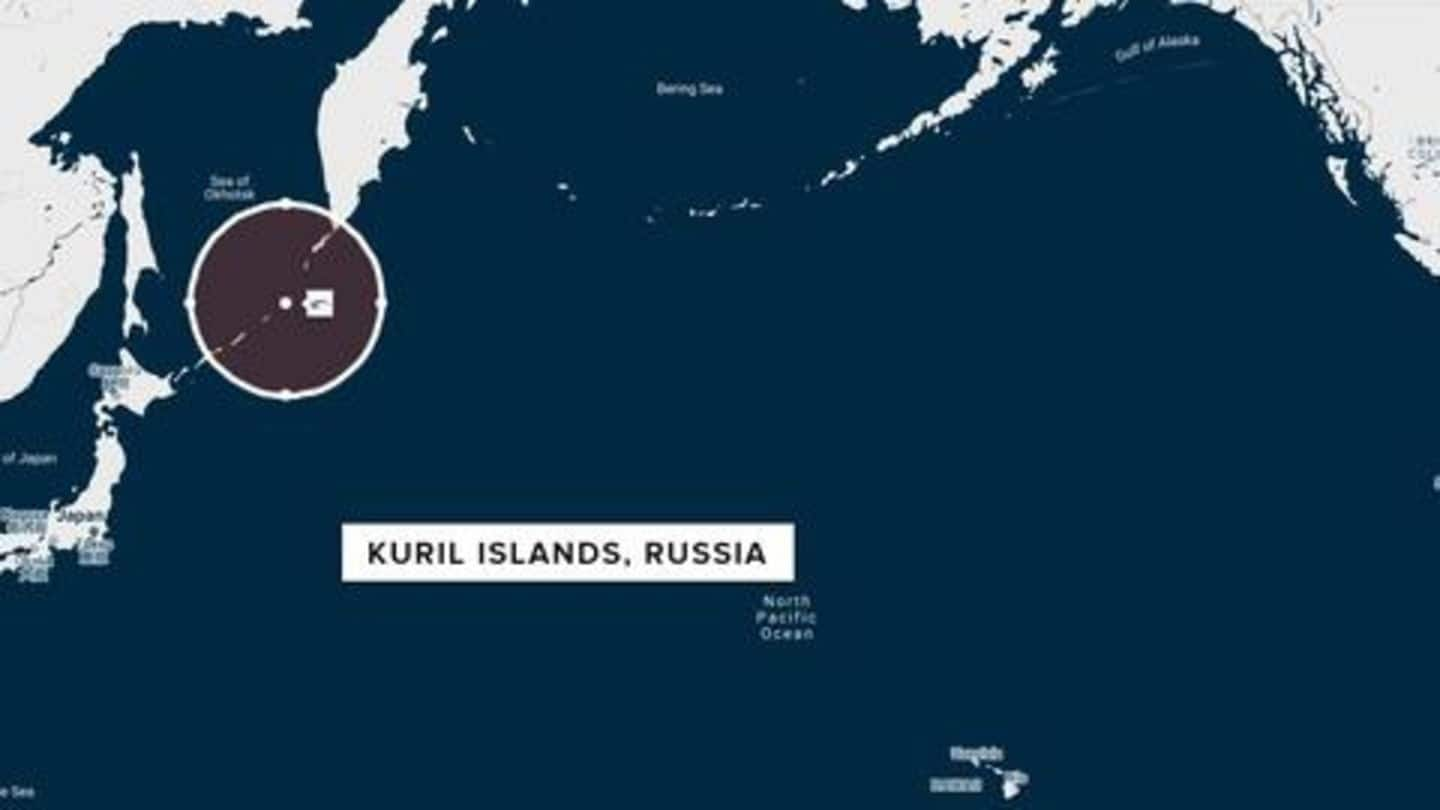
7.5 magnitude earthquake jolts Russia, tsunami alert sounded, then canceled
What's the story
On Wednesday afternoon (local time), Russia's far east region was jolted by a 7.5 magnitude earthquake, but no casualties were reported at the time of the press. The quake struck across the Kuril Islands, and it triggered a tsunami alert some 5,600 kilometers away in Hawaii. However, the US National Tsunami Warning Center canceled the warning saying there was no threat.
What happened
Town having population of over 2,500 was affected
Earlier, the quake was recorded at 7.8 on the Richter scale but the US Geological Survey (USGS) later revised it to 7.5. The quake struck Pacific Ocean 219 km southeast of Severo-Kurilsk, directly affecting a small town with a population of over 2,500. About the quake, a person tweeted he never felt anything like it and immediately ran out of the house.
Details
People left homes, screamed for help
Local media reported that people fled their homes, came out of shops and malls, as soon as the jolts were felt. Some screamed for help and some struggled to reach safe zones. Earthquakes are a common phenomenon in the area. Just last month, a 4.9-magnitude earthquake slammed Kronotsky Bay on Russia's the Kamchatka Peninsula. This area is 300 km north of Severo-Kurilsk.
Warning
After warning about dangerous tsunami waves, Pacific Tsunami Centre clarified
Soon after the tremors were felt, the Pacific Tsunami Warning Centre said hazardous tsunami waves will make landfall within 1,000 km of the epicenter, citing that in the past such quakes have sparked dangerous waves. Retracting the statement, the Centre said, "Tsunami waves are forecast to be less than 0.3 meters above the tide level." There was no threat, it stated.
Japan
Japan officials didn't issue any warning
Meanwhile, MeT officials of Japan didn't issue an alert but noted there might be slight tidal changes. Had the earthquake triggered a catastrophic tsunami, it would have added to the woes of the world, that is already dealing with the coronavirus pandemic. The COVID-19 disease has killed nearly 19,000 people worldwide and infected over 400,000 since its outbreak in China last year.